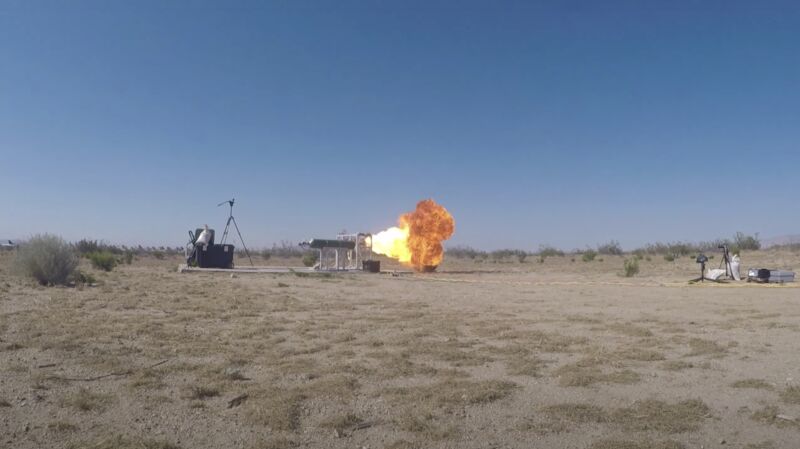
Enlarge / The air intake on Mountain Aerospace Research Solution's Fenris engine after its first hotfire last July. The lines around the cone feed kerosene and gaseous oxygen into a combustion chamber, where it is mixed with the air and ignited. (credit: Aaron Davis | Mountain Aerospace Research Solutions)
There's a small airfield about a two-hour drive north of Los Angeles that sits on the edge of a vast expanse of desert and attracts aerospace mavericks like moths to a flame. The Mojave Air & Space Port is home to companies like Scaled Composites, the first to send a private astronaut to space, and Masten Space Systems, which is in the business of building lunar landers. It’s the proving ground for America’s most audacious space projects, and when Aaron Davis and Scott Stegman arrived at the hallowed tarmac last July, they knew they were in the right place.
The two men arrived at the airfield before dawn to set up the test stand for a prototype of their air-breathing rocket engine, a new kind of propulsion system that is a cross between a rocket motor and a jet engine. They call their unholy creation Fenris, and Davis believes that it’s the only way to make getting to space cheap enough for the rest of us. While a conventional rocket engine must carry giant tanks of fuel and oxidizer on its journey to space, an air-breathing rocket motor pulls most of its oxidizer directly from the atmosphere. This means that an air-breathing rocket can lift more stuff with less propellant and drastically lower the cost of space access—at least in theory.
No comments:
Post a Comment